
Table of contents:
- Author Bailey Albertson [email protected].
- Public 2023-12-17 12:53.
- Last modified 2025-06-01 07:32.
Installing a boiler and connecting it to the water supply with your own hands

Many of us, having bought a boiler, ask questions: can it be installed with our own hands, and how difficult is this process? If you have a little skills in plumbing and electrical, self-installation of the boiler should not cause you serious difficulties. In addition, self-installation of the heating device will help you save money that could have been spent on paying for the services of specialists. However, the work will require strict adherence to safety rules and, of course, the availability of the necessary tools.
Content
-
1 What is a boiler and how it works
-
1.1 The device of the storage water heater
1.1.1 The role of the magnesium anode in the water heater and the scheme of its operation
- 1.2 Do I need permission to install a boiler in the apartment
- 1.3 Is it possible to install a water heater under the sink
-
-
2 Preparatory work before installing the boiler
2.1 Equipment and tools required for self-assembly or replacement of a water heater
-
3 Features of mounting the boiler on a thin wall
3.1 Video: how to hang a water heater on an aerated concrete wall
-
4 Installation of a water heater
- 4.1 Mounting the boiler on the wall
-
4.2 Connection to water pipes
4.2.1 Video: diagram of connecting the boiler to the water supply
-
4.3 Connecting the boiler to the electrical network
- 4.3.1 Video: how to connect the boiler to electricity
- 4.3.2 Connecting the boiler via a time relay
- 4.4 Video: installation and connection of a water heater (boiler)
- 5 Boiler insulation
What is a boiler and how it works
A boiler is a heating device that makes life much easier for people when they are faced with a preventive shutdown of hot water supply in city apartments, and provides comfort in the country, where the water heater works on an ongoing basis.
The water heater can have a storage or flow-through device. The advantages of flow-through boilers are considered to be small size and low weight, which allows them to be mounted even on not very strong bases, for example, plasterboard. On the other hand, to ensure the required water heating rate, flow-through boilers are equipped with very powerful heating elements, which are not able to withstand weak electrical wiring.

For rapid heating of water, instantaneous boilers are equipped with very powerful heating elements.
Storage devices are in greatest demand because they have a larger volume, are cheaper and consume less electricity. In addition, during their installation, such high requirements are not imposed on the wiring as when installing flow-type water heaters.

Storage devices are in high demand because they are more cost effective and do not require heavy wiring.
Storage water heater device
The device of a storage water heater is similar to the design of a household thermos. The inner tank is separated from the outer walls of the case by a rigid polyurethane heat-insulating layer to minimize heat loss. The water entering the tank is heated by a heating element (thermoelectric heating element). To set the required water temperature, an integrated thermostat is used.
The role of the magnesium anode in the water heater and the scheme of its operation
The internal tank of the water heater is the most vulnerable element of the design, since it is constantly exposed to temperature changes and the negative effects of substances contained in the water. A magnesium anode helps protect this part from corrosion.
It is manufactured in the form of a thin round rod with a diameter of 14-25 mm and a length of 140-660 mm with a layer of magnesium alloy applied to the surface with a thickness of up to 15 mm. In the immediate vicinity of the heating element, the anode is fastened using a threaded rod located in the center of the rod. Sometimes the anode is placed on the top wall of the inner tank.

A magnesium anode helps protect the internal tank of the boiler from corrosion.
In addition to magnesium anodes, electric, titanium and zinc analogs are used in water heaters. But the magnesium anode is the most economical and therefore the most popular.
Most often, low-carbon steel is used for the manufacture of internal tanks for water heaters. Magnesium has a valence II and is a more active metal than iron, which has a valence III. When water is heated, oxygen is formed. Magnesium binds it, thereby preventing the formation of corrosion in the tank and on the steel shell of the heating element. This process is called tread protection, which is why magnesium anodes are sometimes called tread anodes.
The magnesium anode also does not allow the formation of scale on the heating element, which is a precipitate of heavy metal salts. Since magnesium is more chemically active than the iron from which the walls of the tank are made, these substances react with it. As a result, dense scale becomes loose, easily separates from the heating element and the tank walls and settles to the bottom in the form of flakes, from where it is removed during regular cleaning of the unit.
Thus, the anode protector in the boiler performs the following functions:
- provides passive protection of the metal tank from corrosion;
- prevents the formation of scale on the thermoelectric heating element;
- softens water.
Over time, the magnesium anode gradually breaks down and dissolves in water, without changing its chemical composition and, accordingly, without harming the health of users.

Over time, the magnesium anode gradually breaks down and dissolves in water
Nevertheless, the anode-protector must be changed from time to time, without waiting for its complete destruction. The frequency of replacement of this part depends on the quality (chemical composition) of the water and the intensity of use of the water heater.
- If the heating device is rarely used and the water in it is rather soft, then the anode can be changed every seven years.
- Under less favorable operating conditions of the device, replacement of the magnesium anode is required much more often - about once a year.
It is recommended to replace it simultaneously with cleaning the water heater
When choosing a replacement for a worn out protector anode, give preference to a product from a well-known manufacturer. A low-quality magnesium element gives the water a persistent rotten smell. To test the quality of the product, make a weak solution of food grade citric acid and place a magnesium rod in it. A tread made of cheap material, when it reacts with acid, will provoke an active release of hydrogen sulphide.
Of course, the boiler can be operated without a protector anode, but the absence of this part will significantly reduce the service life of the water heater. Typically, anodes are supplied with water heaters. But for replacement, this item can be purchased separately.
Do I need permission to install a boiler in the apartment
The need to obtain permits for installing a water heater in a city apartment depends on the type of device.
-
If you want to connect an electric boiler, which belongs to household appliances, then you will not need a special permit for this. You just need to make sure that the available free power of the electrical network is sufficient for it. For example, a 150-liter boiler is switched on and consumes 1.5-2.0 kW. It takes 3-5 hours to heat the water, and it will cool down by no more than 0.5 degrees per hour. If the capacity is not enough, then you need to contact the energy company with a request for additional resources. Naturally, you have to pay for this.

Electric boiler To connect an electric boiler, special permission is not required if the electrical network can withstand the load it creates
-
If you are going to install a gas water heater in an apartment, then you need to obtain permission for it from the gas service center, presenting a document of ownership of the property. The center's specialists will come to you to draw up a project. This service is paid. In addition, do not forget that the installation of a gas water heater must also be carried out by gas service specialists.

Gas boiler Installation and connection of a gas water heater must be carried out by specialists of the gas service
But you will not be given permission to install a gas water heater if there is no ventilation duct in the immediate vicinity of its installation site through which exhaust gases will be removed. Most often, even in apartments with gas stoves, separate channels are not provided, and no one will allow you to bring the ventilation pipe to the outer wall of the house.
If you still managed to obtain permission to install a gas boiler, keep in mind that fuel consumption in your apartment will increase several times. Installation of gas equipment without permission is subject to a fine.
Therefore, before purchasing such a device, think about whether you need it, or whether you should limit yourself to an electric water heater, with which there is much less hassle in terms of installation and operation.
Is it possible to install a water heater under the sink
In a small apartment, the best place to place a boiler may be the space under the sink in the kitchen or in the combined bathroom. An electrical appliance hidden in this way will not spoil the interior design. However, not all types of boilers are suitable for installation under the sink.

The boiler hidden under the sink will not spoil the interior design
Due to the limited space under the sink, a storage or instantaneous water heater with a capacity of up to 25 liters can fit. The water in such a device is heated by a heating element or an open electric heater. The gas device, due to its high performance and, therefore, considerable dimensions, is suitable for mounting exclusively on a wall or on a free floor space.
Another feature: in a water heater intended for installation under the sink, the pipe inlet must be located at the top. You should definitely pay attention to this when buying a device. A boiler with a different location of the hose supply will also fit in size, but it will be inconvenient to install. In addition, such a device will not function correctly and quickly fail.
Preparatory work before installing the boiler
Self-installation of an electric water heater will cost you less than the services of specialists. On average, the work will take about two hours. But when preparing for installation and directly in the process of performing work, you should follow the safety rules.
-
First of all, you should decide on the model of the boiler: what system it should be - flow-through or storage, how many liters it is designed for, how it will be mounted - horizontally or vertically, on a wall or under a sink, etc.

Horizontal wall mounted boiler Wall-mounted boilers are not only vertical, but also horizontal.
-
The next step is to create a wiring diagram for the device on paper with the designation of the hot and cold water inset. Then you need to do the following:
- free up space for the water heater and work;
- check the strength of the wall for the ability to withstand the weight with a double margin (for example, if the boiler has a volume of 50 liters, then fasteners are required for a weight equal to 100 kg plus the weight of the empty boiler);
- since a water heater is a very powerful energy consumer, it is necessary to determine in advance the type of wiring (aluminum or copper) and the cross-section of the cable laid in the walls, as well as assess the ability of the wiring to withstand the load of an electric boiler (for example, to connect a 2 kW boiler, a copper cable with a cross section from 2.5 mm 2);
-
check the condition of water pipes and risers (especially for old houses) - they must be in good condition and have points for connecting a water heater.

Boiler installation diagram On the boiler installation diagram, it is necessary to indicate the sequence of connecting devices and the type of shut-off valves used
- Before you start installing the boiler, you need to read the instructions to understand the features of the model, then turn off the electricity and shut off the pipes supplying hot water. It should be remembered that if you live in a multi-storey building, this will temporarily deprive residents of other apartments of hot water, so you need to carefully prepare for work in order to finish it as soon as possible.
You can check the strength of the wall in the following way: mount the fasteners that come with the boiler and hang two bags of cement on it. If the mount can cope with such a load, then it will be able to withstand a water heater, which weighs half as much.
Particular attention should be paid to checking the strength of the wall when installing a large 150-liter boiler. The fastening of such a unit is made on expansion metal anchor bolts or special durable hooks. It is recommended to use anchors with a length of 100 mm and a diameter of 10 mm.
It should be borne in mind that the installation of the water heater will require the efforts of two people, since this process is quite time consuming. Typically, the boiler is installed in the bathroom or in the toilet directly above the toilet. As a rule, this place is not used in any way. At the same time, it must be approached freely.
In a small room, to save useful space, the boiler is usually placed horizontally. A small water heater is attached to the wall, and units with a volume of 200 liters or more are installed on the floor.

If the volume of the boiler exceeds 200 liters, it must be placed on the floor.
Equipment and tools required for self-installation or replacement of a water heater
Before proceeding with the installation of the boiler, prepare the following tools, materials and equipment:
- sanitary tape or sealing tape;
- tow;
- Unilak paste;
- roulette;
- safety valve with a valve with a diameter of 10 mm (supplied with the boiler);
- two flexible water supply hoses with a length of at least 2 m (the length of the hoses must correspond to the distance from the boiler to the point of insertion into the water supply system);
- metal-plastic pipes;
- three stopcocks;
- three tees;
- two dowel nails with hooks at the ends;
- Phillips and slotted screwdrivers;
- pliers;
- nippers;
- hammer drill or electric drill;
- drills with a victorious tip (if it is supposed to fix the boiler to a brick or concrete wall);
- adjustable wrench;
- wrench.
To connect a powerful instantaneous water heater, if the wiring does not provide for the connection of electric stoves, you will need a three-core PVA 3x8 copper cable, a meter that can withstand a current of at least 40 A, a socket block with grounding, a 40 A machine and an insulating tape.
Features of mounting a boiler on a thin wall
Ideally, the water heater should be mounted on solid brick, concrete or block walls, since the appliance is quite heavy with water. But sometimes the device needs to be hung on a thin plasterboard, frame, wooden, aerated concrete or foam block base. In this case, you will need to strengthen the wall and use special fasteners.
It is impossible to mount a water heater directly on a wooden wall for fire safety reasons. To begin with, it must be well insulated from heating, for example, with a profile iron, which is used for the roof.
In other cases, special mounts are used:
- spiral nylon dowels;
- metal fasteners for mounting boilers with a capacity of 100 liters or more.
If you plan to hang the water heater on a wall made of foam concrete blocks, then you will need metal dowels or special chemical (adhesive) anchors for foam concrete. Chemical anchor is a universal fastener that can withstand high loads. It is environmentally friendly and resistant to low temperatures.

The expansion dowel is held in the wall by frictional forces in the expansion joint, and the chemical anchor - due to the adhesion of a special adhesive
Fastening to an adhesive anchor is done in the following way:
- A hole is drilled with the expansion of the channel by rotating the drill at an angle in different directions.
- Concrete dust is removed from the hole.
- The hole is filled with a quick-hardening mixture, into which a mounting sleeve or threaded stud is inserted.
The resulting cone-shaped plug provides a fairly high fastening strength.

For installation in hollow structures, an anchor sleeve is inserted into the hole, and a stud is already screwed into it
Video: how to hang a water heater on an aerated concrete wall
Installation of a water heater
Installation of a water heater for a flow-through and storage system is the same. Before starting work, it is important to familiarize yourself with the instructions that come with the device. If there is no such instruction, you can download it on the Internet.
Boiler wall mounting
-
Before installing the boiler on the wall with chalk or a marker, draw the bottom line of the device placement on it. Then measure the distance from the mounting plate attached to the heater body to the bottom line and mark this distance. When marking out, pay attention to the height from the holes on the anchors to the top of the heater. It must be less than the distance to the ceiling, otherwise the water heater will not pass in height.

Wall marking for boiler installation When choosing a place for installing fasteners, it is necessary to check the position of the lower and upper edges of the boiler housing
- Drill two or four holes depending on the number of fasteners supplied with the boiler. To punch holes in a concrete or brick wall, you need to use an electric drill with a winder drill. A drill with a conventional tip is suitable for drilling holes in a wooden wall. Its diameter should be less than the diameter of the plastic dowel. Remember that there are no such holes on the fastening bar, and the anchors with hooks at the ends will cling to its edge.
-
Install the mounting hardware: hammer the dowels into the holes with a mallet or hammer, screw the metal anchor to a depth of about 12 cm (it should stop turning). Then hang up the boiler.

Installing the boiler on the wall Anchors with metal hooks are inserted and screwed into the drilled holes, and then the boiler is hung on them
Connection to water pipes
- Connect the unit to the water supply using flexible hoses or polypropylene pipes. Keep in mind that connecting through plastic pipes will cost you more and take longer. If there are already connection points, then the work will not cause any particular difficulties.
-
In the absence of pre-prepared bends, you will have to make them yourself from metal-plastic or plastic pipes. This will take about half an hour. It will take more time to insert tees into a steel pipe - about two hours. This will require a die to fit the pipe. When connecting, pay attention to the color of the rings of the pipes located at the bottom of the boiler: cold water will be supplied through the pipe with the blue ring, hot water will be discharged through the pipe with the red ring.

Reinforced plastic bends for connecting a boiler In the absence of pre-prepared bends, you will have to make them yourself from metal-plastic or plastic pipes
-
A relief valve should be installed in the cold water supply to relieve excess pressure. It is performed automatically. This helps prevent damage to the water heater. If this part is not included with the water heater, then you will have to buy it separately. It is important to consider the direction of water flow when installing the valve. To facilitate maintenance, an additional tee can be inserted in front of the valve and a tap connected to it.

Safety valve Excessive water pressure is released through the safety valve during operation
-
Screw a sealant onto the thread, which can be tow, sanitary linen or FUM tape, and connect the safety valve. Screw one end of the flexible hose to it. You can do without a seal here, since the hose nut has a sealed rubber gasket. Screw the end of the second flexible hose to the hot water pipe, also without using a seal.

Flexible water line A rubber gasket is installed in the fixing nut of the flexible line, so it can be screwed onto the pipe without an intermediate seal (flax, FUM tape, sealing cord, etc.)
-
Connect the end that will supply cold water to the water pipe through a valve or tap. This is necessary so that the water supply can be shut off, for example, in case of replacement of spare parts for the boiler. Connect the free end of the second hose to the pipe leading to the mixer.

Connecting the boiler to the water pipes The pipe through which cold water will enter the boiler is connected through a ball valve
-
If you only need a flow-through unit for the time the hot water supply is turned off, connect it through a shower hose. To do this, only cold water is connected to the boiler:
- turn off the water;
- cut the pipe with a grinder;
- cut the thread with a die;
- wind sanitary flax;
-
cut a tee into the cold water pipe;

Instantaneous water heater connection The instantaneous water heater is connected through a tee in the cold water main
- put a shut-off valve;
- connect the assembled magistrate to the boiler inlet with a flexible hose.
- Connect the hot water outlet to the hot water tap using a reinforced plastic pipe or flexible hoses without using additional elements. To check the tightness of the connections, turn on the water, fill the container and leave for about an hour. If there are no leaks during this time, feel free to connect the unit to the power grid.
Video: diagram of connecting the boiler to the water supply
Connecting the boiler to the electrical network
Some boilers come with a cable with a plug connected to the unit. If these elements are not available, then they are purchased separately.
- Install a grounded power outlet near the equipment. If the tightness test showed no leaks, feel free to connect the boiler plug to an electrical outlet.
-
The power supply can be connected directly to the electrical distribution board using a separate automatic switch. In this case, the following scheme must be observed:
- the blue wire suitable for the terminal of the water heater N is zero or reverse;
- brown wire suitable for terminal L - phase;
-
yellow wire - ground.

Boiler wire colors The brown wire must be connected to the electrical phase, the blue wire to "zero", and the yellow-green wire to the ground
-
A lit indicator light will inform you about the correct connection of the equipment. Then, using the regulator located at the bottom of the boiler, set the required temperature. After that, the installation and connection of the water heater can be considered complete.

Setting the water temperature The temperature of hot water in the boiler is set using a modulating regulator
Video: how to connect a boiler to electricity
Connecting a boiler via a time relay
In order to save electricity, the boiler can be connected via a time relay. This will allow you to turn off the water heating late at night or during the day when it is not needed. If a heat accumulator is connected to the water heater, it can, on the contrary, be turned on at night, when the tariff for electricity consumption is lower than in the daytime. During the day, it will automatically turn off.
Let's consider the option of connecting the boiler through the ABB AT1-R time relay. It can be either with a battery inside or without it. The battery inside the mechanism allows it to work autonomously for 200 hours.

The relay allows you to turn on the power of the electrical device only during certain periods of time
The line supplying the water heater will go from the panel located in the combustion room directly to the device. The time relay of this model is equipped with one contact for closing. Depending on the type of boiler, it has the ability to switch an active load up to 16 A.
The device has a scale indicating the values of time intervals. Four divisions represent 15 minute intervals. Thus, the time intervals can be set equal to 15, 30 and 45 minutes.
To disconnect the load on its own, you must move the red lever located next to the time scale to position 1.
After that, it is necessary to set the response time. Try to choose an even hour for this, for example, 18:00 or a multiple of 15 minutes: 18:15, 18:30, 18:45. To set the time, you need to turn the drum until the required readings on the scale coincide with the white lever next to the "1-0" mark.
Video: installation and connection of a water heater (boiler)
Boiler insulation
In order for the boiler to retain heat better, it must be wrapped with polypropylene foam, polyurethane foam or isolon. Insulating material is fixed with glue or wire. Thermal insulation of the entire surface of the boiler not only helps to retain heat, but also reduces the time for heating the water by increasing the efficiency of the heat carrier. High-quality insulation will not allow the water to cool quickly.

High-quality insulation will not allow water to cool quickly
The second way to insulate a boiler is to place a container of a smaller volume inside a large tank. The resulting space acts as a heater.

The space between the walls of the tanks serves as a heater
And yet, if you realize that you are unable to install the boiler yourself, or there is a need to replace pipes due to wear, contact a specialist. Their services will not cost you too much: dismantling an old water heater - about 500 rubles, installing and connecting a new device - about 7,000 rubles. At the same time, you will be sure that the equipment is connected correctly and you will not have an accident or explosion. There is one more important point: if you install the boiler yourself, as a rule, the manufacturer's warranty will be canceled.
Recommended:
How To Make A Wardrobe With Your Own Hands At Home: Step-by-step Instructions For Making, Installing Filling And Doors With Drawings And Dimensions
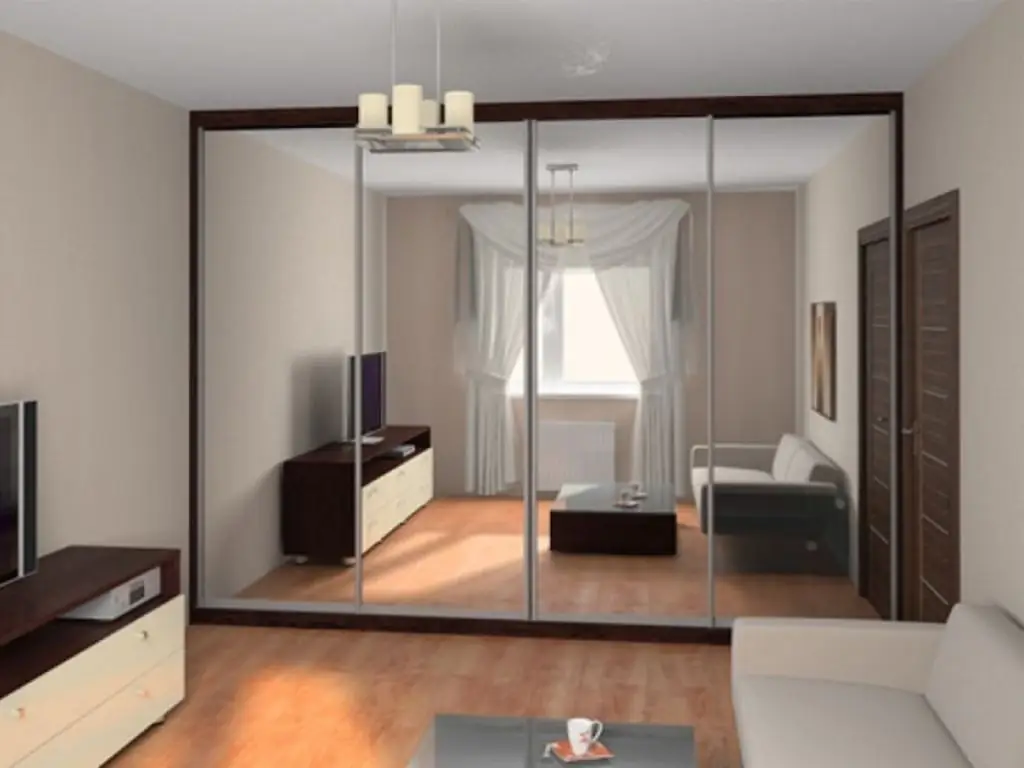
A detailed guide to making a wardrobe with your own hands. Design, marking, installation of internal filling, installation and adjustment of doors
How To Make A Dutch Oven With Your Own Hands (including With A Water Boiler): A Diagram, Step-by-step Instructions, Etc
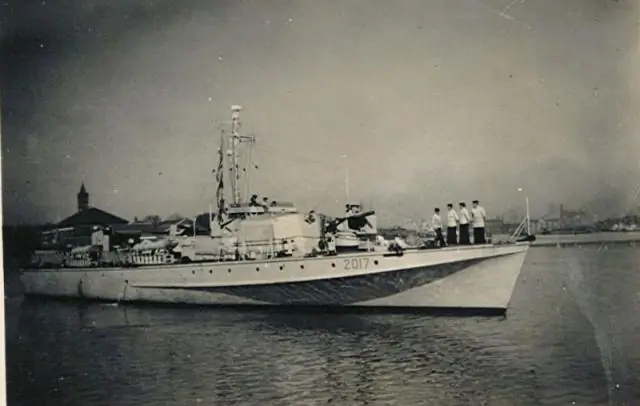
Can you build a Dutch woman yourself? What is important to know for this and what materials are needed. The order of work and the necessary tools. Maintenance and repair
How To Repair A Boiler With Your Own Hands (including Draining The Water): Malfunctions, Their Causes, Etc. + Video
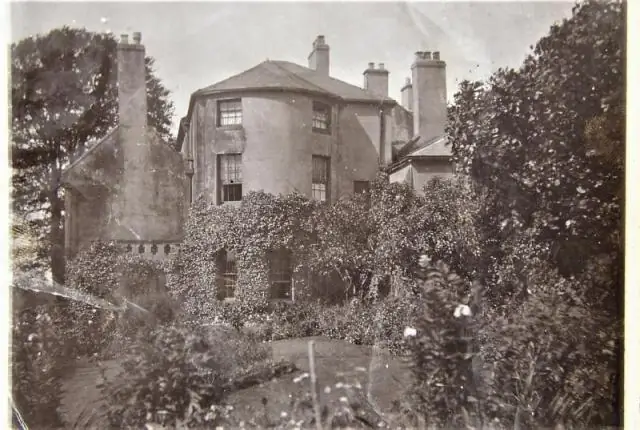
The device and principle of operation of water heating devices. How to find the causes of a water heater breakdown. DIY instructions for eliminating major breakdowns
How To Install A Toilet With Your Own Hands - Step-by-step Instructions For Installing And Connecting To The Sewer With Video
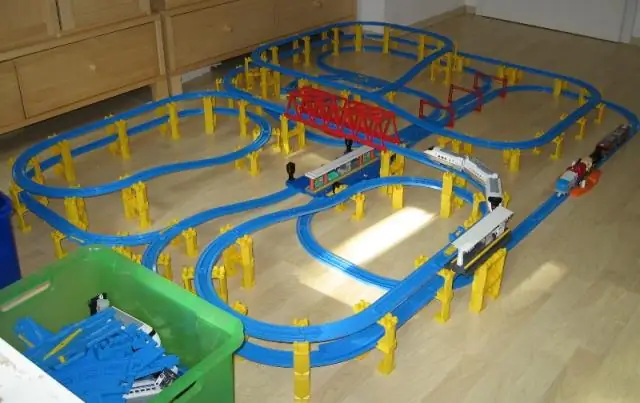
Classification of toilets according to different criteria. The choice of the toilet, installation features depending on the type of construction. Installation errors and how to fix them
How To Set Up An Internet Connection On A Computer: Setting Up A Network And Automatic Connection At System Startup
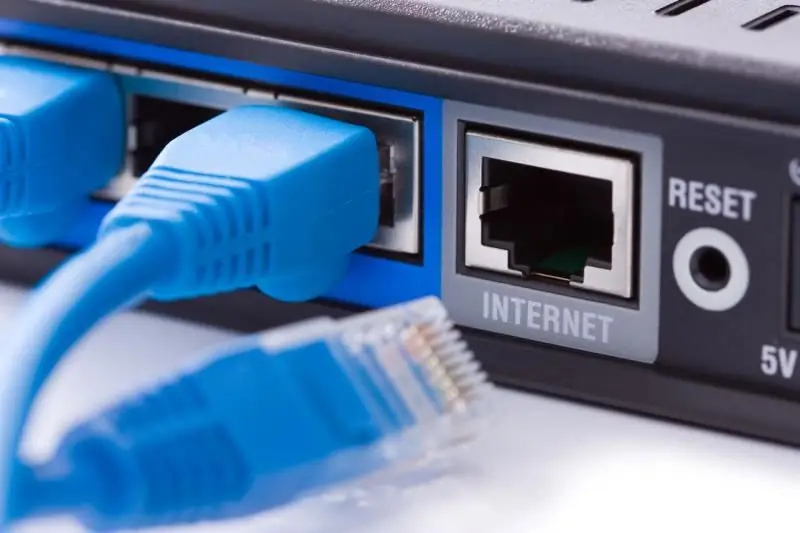
How to set up an Internet connection on a PC with Windows XP, 7, 8 and 10, as well as Linux and Ubuntu. Automatic internet connection when Windows starts
